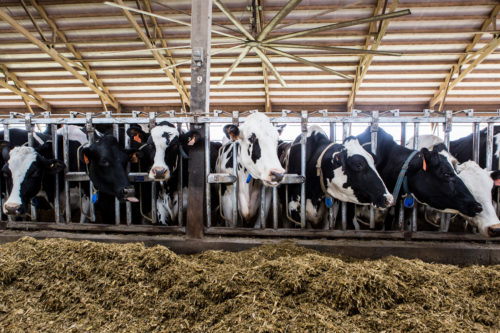Keep Your Book of ‘Thumb Rules’ Up-To-Date on Your Dairy
Posted: July 10, 2019 | Written By: Kevin Buttles, Form-A-Feed Nutrition and Production Specialist

The dairy industry has seen many improvements over the years in dairy nutrition: forage production, harvesting, and storage, cattle facilities, animal husbandry, reproduction programs, milking equipment and procedural strategies, and various management techniques. These changes and improvements have resulted in updated ‘thumb rules’ and benchmarks that guide dairy managers, employees, and consultants in managing and evaluating how their dairies stack up to a certain standard.
Whether it came from precise, controlled research, industry partner experiments and innovations, or old-fashioned producer ingenuity, we need to be taking hold of the new information and improvements that are constantly coming to the forefront. We need to be ready to revise our old thumb rules and benchmarks and adapt to new ones to be able to continue to utilize new information, helping us to move forward in this margin-tight industry.
Here are three such thumb rules or benchmarks that detail specific management areas on a dairy whose updates may have gotten past your radar.
- Body Condition Scores
A commonly used benchmark for recommended body condition scores (BCS) at dry off used to be 3.5 to 4.0 and then to maintain that BCS to calving time. Over decades of studying transition cow health, early lactating milk, and reproduction efficiency, dairy researchers have come to modify that benchmark to be just 3.0 at dry off with no need to be over 3.25 at calving. We have always known that fat cows and large changes (decreases) in body condition after calving contribute to fresh cow problems and poor reproductive performance. Studies in the last few years clearly indicate better health and fertility when cows maintained or increased BCS during their transition period. To keep from getting too fat, however, cows must dry off between 3.0 and 3.25.
- Penn State Particle Separator Recommendations
For many years, the generally preferred guidelines for the percent of material on the top screen of the Penn State Shaker Box for a TMR sample was 6-10%. Over years of improved forage harvesting methods and equipment, improved forage hybrids, updated methods to evaluate physical fiber and fiber digestibility, and advancements in diet formulation we now look for a top screen benchmark of 2-8% and put much more emphasis on the remaining screens. Certainly, the risk of sorting the TMR goes up when the top screen goes over 8.0%. Equally important, make sure you are interpreting your Shaker Box results based on the version of the Penn State Shaker Box and the specific sieves you are using.
- 24” of Bunk Space Per Lactating Cow
Many barns have been built with the intent to have 2 feet of bunk space per lactating cow and 2.5 feet for dry cows. This has become the industry standard. Although it was over seven years ago, one study evaluated multiple bunk spacings per cow and found that cows cannot access feed all together even with two feet of bunk space per cow. In fact, there was less fighting and more eating as feeding space increased beyond two feet. In another study, subordinate cows were given a choice to eat a low palatability feed alone or they could choose a high palatability feed that was available with a dominate cow at multiple distances nearby. The cows in the study clearly “told” us that they will settle for less desirable feed to avoid competition even when bunk space exceeds the current industry standards. Even if you are not ready to change this thumb rule yet, it certainly pleads the case for increased bunk space per cow for transition cows, special needs cows, and mixed parity pens to ensure optimal feeding behavior.
Do you have other ‘rules of thumb’ that you swear by on your farm? It may not hurt to do a little research to make sure those rules still apply today.